1 Clarification
Representing an either-or relationship in Crows foot ERD
The diagram you have is a good start. Note:
- that is not ERD. That is way more detail than an ERD can handle
- ERD does not have a Crows Foot, that is IEEE notation
Ultimately, you need a data model that has the detail required for an implementation (way more than ERD). That is why I said your diagram is a good start, it is moving in that direction. However, we have a Standard for Relational Data Modelling: IDEF1X, the Standard for modelling Relational databases since 1993, available since 1984 before it was elevated to a standard.
- Evidently both Dr E F Codd's Relational Model, and the diagrammatic method for modelling Relational databases is suppressed.
The relationship symbol, especially the cardinality, in IEEE notation is better (more easily understood) than IDEF1X, therefore most people use that. All data modelling tools, such as ERwin, implement IDEF1X, and allow either IDEF1X or IEEE notation for relationships.
2 Request
The diagram as intended is illegal. Why ? Because you have one relationship going "out" of Person, to two tables. Not possible. You are asking how to represent such a relationship in a data model (not possible in ERD). The answer is, that is an OR Gate is logical terms, a Subtype in Relational terms.
Please inspect these answers for overview and detail. Follow the links for implementation details and code:
Subtypes can be:
Exclusive (the Basetype must be one of the Subtypes), or
Non-Exclusive (the Basetype must be any [more than one] of the Subtypes).
From Role it appears to be Exclusive. What you call Role is a Discriminator in IDEF1X.
That is best practice for Relational databases.
Relational Data Model
This is best practice for for data models (this level of detail shows attribute name only).
![Relational data model/Subtype [AS IS] for user11073489 Foo](../../images/1456741930.webp)
Of course, all my data models are rendered in IDEF1X.
My IDEF1X Introduction is essential reading for beginners.
ParentId, StudentId, OwnerId are all RoleNames (Relational term)of PersonId. This makes the context of the FK explicit.
3 Correction
but I am unsure if this conforms to best practice
Since you are concerned, there is one other issue. There is a mistake in your model, it is one of the common errors that happen when one stamps id on every file. Such a practice cripples the modelling exercise, and makes it prone to various errors. (I understand that you are taught that crippling method.)
Since a Person can have 0-or-1 Account, and the Person PK (which is unique to a Person), is a FK in Account, it can be the PK in Account.
AccountId is not necessary: it is 100% redundant, one additional field and one additional index, that can be eliminated.


![Relational data model/Subtype [AS IS] for user11073489 Foo](../../images/1456741930.webp)
